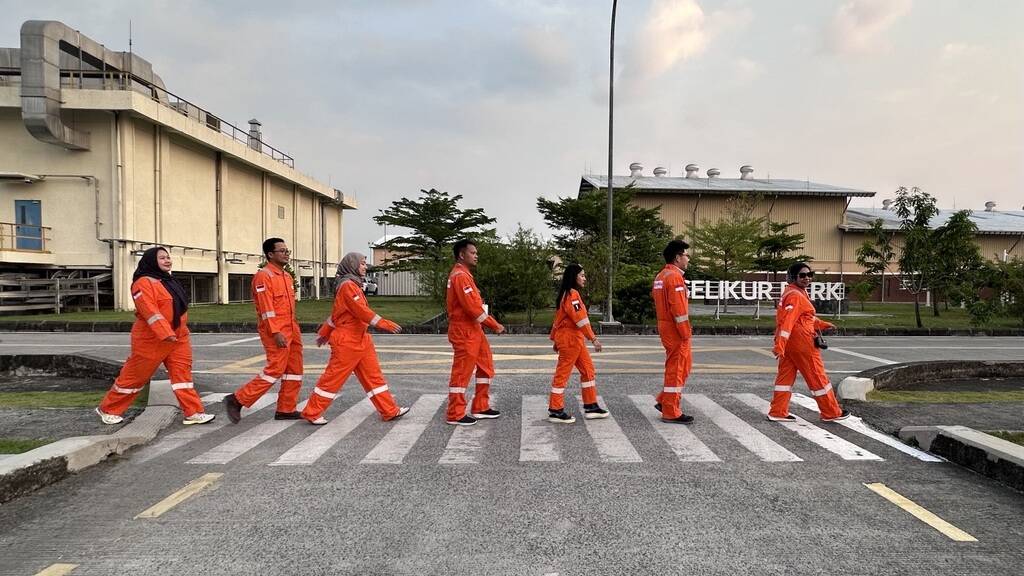selected item
Putting Houston's carbon capture and storage potential into perspective
September 7th, 2021
A carbon capture and storage (CCS) hub in Houston could dramatically accelerate the deployment of CCS technology in the United States.
Originally proposed by ExxonMobil, this hub is part of the company’s ongoing efforts to reduce emissions from the hardest-to-decarbonize sectors like heavy industry and power generation.
Carbon capture potential: how CCS technology could reduce industrial emissions in Houston
The concept aims to capture emissions from industrial facilities in the Houston area and safely store them deep below the Gulf of Mexico seabed in natural geological formations. The hub could remove up to 100 million metric tons of CO2 a year by 2040, helping to put the city on the path to meeting its goal of becoming carbon neutral by 2050.
Considered by experts to be one of the few proven technologies able to significantly reduce emissions from certain hard-to-decarbonize industries, CCS could be a game changer when it comes to meeting the Paris Agreement’s climate goals.
To put the hub’s potential into perspective, here’s a glance at what 100 million metric tons of CO2 looks like:
What does 100 million metric tons of CO2 look like?
Meeting the climate goals of the Paris Agreement will require a combination of big ideas and critical technologies. ExxonMobil believes, and experts around the world agree, that carbon capture and storage is the key to meeting these goals.
12M
POWERING 12M HOMES - MORE THAN ALL THE HOMES IN AUSTRALIA
22M
NEARLY 22M PASSENGER VEHICLES
SEQUESTRATION
CO2 THAT COULLD BE CAPTURED BY A FOREST LARGER THAN CALIFORNIA
NIGERIA'S
CO2 OUTPUT IN 2019
250B
DRIVING 250B MILES, OR CIRCLING THE EARTH 10M TIMES
Sources:
https://edgar.jrc.europe.eu/country_profile/NGA
https://www.epa.gov/energy/greenhouse-gas-equivelencies-calculator
https://www.census.gov/quickfacts/geo/chart/AL/HSG010219
https://profile.id.com.au/australia/population
Explore more

Capture it. Move it. Store it: Three steps for reducing CO2 emissions
- Want to learn more about carbon capture and storage (CCS)?
- Clay, Mark and Elizabeth are here to help in a video series.
- They explain how CCS works, why it matters and what makes it safe.
2 min read

Indonesia’s “and” solution for the energy transition
- Carbon capture and storage (CCS) supports industry continuing to grow while reducing emissions.
- Indonesia is well positioned to take advantage of the growing need for CCS.
- Indonesia’s policy on CCS is helping to accelerate the industry.
2 min read

How we’re capturing carbon and storing it safely
- In a new video, our Kathleen Ash explains how we’re keeping carbon capture and storage (CCS) safe.
- We have robust systems to safely transport and store captured CO2 emissions.
- We’re committed to protecting the safety of communities in which we operate.
2 min read

Calpine, ExxonMobil sign CO2 transportation and storage agreement for power generation project
- ExxonMobil to transport and store up to 2 million metric tons per year of CO2 from Calpine’s natural gas power generation facility.
- Calpine plans to produce ~500 megawatts of reliable low-carbon electricity, enough to power more than 500,000 homes.
- Project expected to bolster U.S. energy, strengthen industry competitiveness, and create jobs.
2 min read

Bringing carbon capture and storage to scale
- Industrial facilities and power plants emit around two-thirds of energy-related CO2.
- A new global business needs to be built to capture, transport, and store carbon.
- We’re utilizing the wide range of skills available in India to explore carbon capture and storage (CCS) opportunities in Asia Pacific and beyond.
2 min read

Carbon capture and storage: Indonesia's winning opportunity
- Captured carbon can be an opportunity for Indonesia.
- Indonesia can use its oil and gas experience to lead the growing carbon capture and storage (CCS) industry.
- The country has the right location and geology to become an Asia Pacific CCS hub.
4 min read
